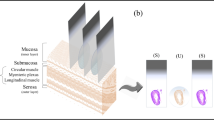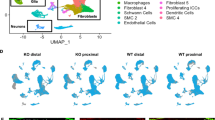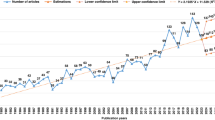Abstract
Background:
Hirschsprung disease (HSCR) is the third most common congenital disorder of the gastrointestinal tract. This study aims to elucidate changes in protein expression between the normal and aganglionic hindgut in human HSCR.
Methods:
The biopsies were obtained from the normal and aganglionic hindgut in human HSCR, and the comparative proteomics were analyzed by mass spectrometry (MS)–based two-dimensional gel electrophoresis (2DE).
Results:
A total of 932–986 protein spots were identified in each of the gut segments, among which 30 spots had at least an eightfold difference in volume (%). Of the 30 differentially expressed spots, 15 proteins were identified via sequence analysis. Among these 15 proteins, eight were upregulated and seven were downregulated in the aganglionic group. The well-represented classes included biomarkers of enteric ganglions, extracellular matrix proteins, LIM domain proteins, serum proteins, and other pleiotropic proteins. Five proteins were selected and verified by western blotting and real-time PCR, and the results were consistent with the results of 2DE.
Conclusion:
MS-based 2DE can help to identify pathological relevant proteins in HSCR; it defines an extensive protein catalog of the normal and aganglionic hindgut and may constitute the basis to understand pathophysiological mechanisms related to the HSCR.
Similar content being viewed by others
Log in or create a free account to read this content
Gain free access to this article, as well as selected content from this journal and more on nature.com
or
References
Kenny SE, Tam PK, Garcia-Barcelo M . Hirschsprung’s disease. Semin Pediatr Surg 2010;19:194–200.
Burzynski G, Shepherd IT, Enomoto H . Genetic model system studies of the development of the enteric nervous system, gut motility and Hirschsprung’s disease. Neurogastroenterol Motil 2009;21:113–27.
Obermayr F, Hotta R, Enomoto H, Young HM . Development and developmental disorders of the enteric nervous system. Nat Rev Gastroenterol Hepatol 2013;10:43–57.
Le Douarin NM, Kalcheim C . The Neural Crest, 2nd revised edition. Cambridge: Cambridge University Press, 2009.
Goldstein AM, Hofstra RM, Burns AJ . Building a brain in the gut: development of the enteric nervous system. Clin Genet 2013;83:307–16.
Takenouchi T, Nakazawa M, Kanemura Y, et al. Hydrocephalus with Hirschsprung disease: severe end of X-linked hydrocephalus spectrum. Am J Med Genet A 2012;158A:812–5.
Vohra BP, Tsuji K, Nagashimada M, et al. Differential gene expression and functional analysis implicate novel mechanisms in enteric nervous system precursor migration and neuritogenesis. Dev Biol 2006;298:259–71.
Saeed A, Barreto L, Neogii SG, Loos A, McFarlane I, Aslam A . Identification of novel genes in Hirschsprung disease pathway using whole genome expression study. J Pediatr Surg 2012;47:303–7.
Ambros V . microRNAs: tiny regulators with great potential. Cell 2001;107:823–6.
Stroncek DF, Burns C, Martin BM, Rossi L, Marincola FM, Panelli MC . Advancing cancer biotherapy with proteomics. J Immunother 2005;28:183–92.
Swami M . Proteomics: a discovery strategy for novel cancer biomarkers. Nat Rev Cancer 2010;10:597.
Hirsch J, Hansen KC, Burlingame AL, Matthay MA . Proteomics: current techniques and potential applications to lung disease. Am J Physiol Lung Cell Mol Physiol 2004;287:L1–23.
Kikuchi T, Carbone DP . Proteomics analysis in lung cancer: challenges and opportunities. Respirology 2007;12:22–8.
Fan Y, Wang L, Zhou F, et al. Comparative proteomics of spinal cords of rat fetuses with spina bifida aperta. J Proteomics 2011;75:668–76.
Hagl CI, Thil O, Holland-Cunz S, et al. Proteome analysis of isolated myenteric plexus reveals significant changes in protein expression during postnatal development. Auton Neurosci 2005;122:1–8.
Marvin-Guy L, Lopes LV, Affolter M, et al. Proteomics of the rat gut: analysis of the myenteric plexus-longitudinal muscle preparation. Proteomics 2005;5:2561–9.
Gao H, He X, Wu M, et al. Proteomic analysis of differentially expressed proteins between stenotic and normal colon segment tissues derived from patients with Hirschsprung’s disease. Protein J 2011;30:138–42.
Bondurand N, Fouquet V, Baral V, et al. Alu-mediated deletion of SOX10 regulatory elements in Waardenburg syndrome type 4. Eur J Hum Genet 2012;20:990–4.
Chaoui A, Watanabe Y, Touraine R, et al. Identification and functional analysis of SOX10 missense mutations in different subtypes of Waardenburg syndrome. Hum Mutat 2011;32:1436–49.
Leon TY, Ngan ES, Poon HC, et al. Transcriptional regulation of RET by Nkx2-1, Phox2b, Sox10, and Pax3. J Pediatr Surg 2009;44:1904–12.
Pelisch F, Khauv D, Risso G, et al. Involvement of hnRNP A1 in the matrix metalloprotease-3-dependent regulation of Rac1 pre-mRNA splicing. J Cell Biochem 2012;113:2319–29.
Clower CV, Chatterjee D, Wang Z, Cantley LC, Vander Heiden MG, Krainer AR . The alternative splicing repressors hnRNP A1/A2 and PTB influence pyruvate kinase isoform expression and cell metabolism. Proc Natl Acad Sci USA 2010;107:1894–9.
Pan H, Luo C, Li R, et al. Cyclophilin A is required for CXCR4-mediated nuclear export of heterogeneous nuclear ribonucleoprotein A2, activation and nuclear translocation of ERK1/2, and chemotactic cell migration. J Biol Chem 2008;283:623–37.
Guha M, Pan H, Fang JK, Avadhani NG . Heterogeneous nuclear ribonucleoprotein A2 is a common transcriptional coactivator in the nuclear transcription response to mitochondrial respiratory stress. Mol Biol Cell 2009;20:4107–19.
Tauler J, Zudaire E, Liu H, Shih J, Mulshine JL . hnRNP A2/B1 modulates epithelial-mesenchymal transition in lung cancer cell lines. Cancer Res 2010;70:7137–47.
Wolf K, Friedl P . Extracellular matrix determinants of proteolytic and non-proteolytic cell migration. Trends Cell Biol 2011;21:736–44.
Breau MA, Pietri T, Eder O, et al. Lack of beta1 integrins in enteric neural crest cells leads to a Hirschsprung-like phenotype. Development 2006;133:1725–34.
Parikh DH, Tam PK, Van Velzen D, Edgar D . The extracellular matrix components, tenascin and fibronectin, in Hirschsprung’s disease: an immunohistochemical study. J Pediatr Surg 1994;29:1302–6.
Miner JH, Yurchenco PD . Laminin functions in tissue morphogenesis. Annu Rev Cell Dev Biol 2004;20:255–84.
Fujimoto T, Hata J, Yokoyama S, Mitomi T . A study of the extracellular matrix protein as the migration pathway of neural crest cells in the gut: analysis in human embryos with special reference to the pathogenesis of Hirschsprung’s disease. J Pediatr Surg 1989;24:550–6.
Kadrmas JL, Beckerle MC . The LIM domain: from the cytoskeleton to the nucleus. Nat Rev Mol Cell Biol 2004;5:920–31.
Stölting M, Wiesner C, van Vliet V, et al. Lasp-1 regulates podosome function. PLoS ONE 2012;7:e35340.
Luo G, Herrera AH, Horowits R . Molecular interactions of N-RAP, a nebulin-related protein of striated muscle myotendon junctions and intercalated disks. Biochemistry 1999;38:6135–43.
Hubbi ME, Gilkes DM, Baek JH, Semenza GL . Four-and-a-half LIM domain proteins inhibit transactivation by hypoxia-inducible factor 1. J Biol Chem 2012;287:6139–49.
Zhong Y, Zhu J, Wang Y, et al. LIM domain protein TES changes its conformational states in different cellular compartments. Mol Cell Biochem 2009;320:85–92.
Wang JX, Qin P, Liu QL, et al. Detection and significance of serum protein marker of Hirschsprung disease. Pediatrics 2007;120:e56–60.
Rozenblum GT, Gimona M . Calponins: adaptable modular regulators of the actin cytoskeleton. Int J Biochem Cell Biol 2008;40:1990–5.
Park K, Choi K, Kim H, et al. Isoflavone-deprived soy peptide suppresses mammary tumorigenesis by inducing apoptosis. Exp Mol Med 2009;41:371–81.
Sheehy NT, Cordes KR, White MP, Ivey KN, Srivastava D . The neural crest-enriched microRNA miR-452 regulates epithelial-mesenchymal signaling in the first pharyngeal arch. Development 2010;137:4307–16.
Author information
Authors and Affiliations
Corresponding author
Rights and permissions
About this article
Cite this article
Zhang, SC., Chen, F., Jiang, KL. et al. Comparative proteomic profiles of the normal and aganglionic hindgut in human Hirschsprung disease. Pediatr Res 75, 754–761 (2014). https://doi.org/10.1038/pr.2014.33
Received:
Accepted:
Published:
Issue date:
DOI: https://doi.org/10.1038/pr.2014.33
This article is cited by
-
Mutations in Smad-interacting protein 1 gene are responsible for absence of its expression in Hirschsprung’s disease
Clinical and Experimental Medicine (2018)
-
Postnatal human enteric neuronal progenitors can migrate, differentiate, and proliferate in embryonic and postnatal aganglionic gut environments
Pediatric Research (2017)



